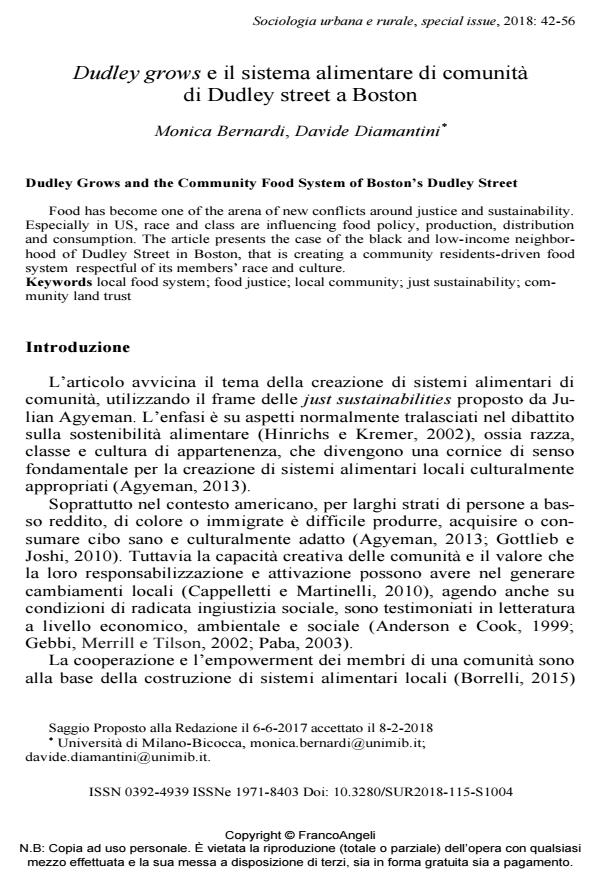Dudley grows e il sistema alimentare di comunità di Dudley street a Boston
Titolo Rivista SOCIOLOGIA URBANA E RURALE
Autori/Curatori Monica Bernardi, Davide Diamantini
Anno di pubblicazione 2018 Fascicolo 2018/115suppl.
Lingua Italiano Numero pagine 15 P. 42-56 Dimensione file 1055 KB
DOI 10.3280/SUR2018-115-S1004
Il DOI è il codice a barre della proprietà intellettuale: per saperne di più
clicca qui
Qui sotto puoi vedere in anteprima la prima pagina di questo articolo.
Se questo articolo ti interessa, lo puoi acquistare (e scaricare in formato pdf) seguendo le facili indicazioni per acquistare il download credit. Acquista Download Credits per scaricare questo Articolo in formato PDF

FrancoAngeli è membro della Publishers International Linking Association, Inc (PILA)associazione indipendente e non profit per facilitare (attraverso i servizi tecnologici implementati da CrossRef.org) l’accesso degli studiosi ai contenuti digitali nelle pubblicazioni professionali e scientifiche
Food has become one of the arena of new conflicts around justice and sustainability. Especially in US, race and class are influencing food policy, production, distribution and consumption. The article presents the case of the black and low-income neighborhood of Dudley Street in Boston, that is creating a community residents-driven food system respectful of its members’ race and culture.
Parole chiave:Local food system; food justice; local community; just sustainability; community land trust
Monica Bernardi, Davide Diamantini, Dudley grows e il sistema alimentare di comunità di Dudley street a Boston in "SOCIOLOGIA URBANA E RURALE" 115suppl./2018, pp 42-56, DOI: 10.3280/SUR2018-115-S1004